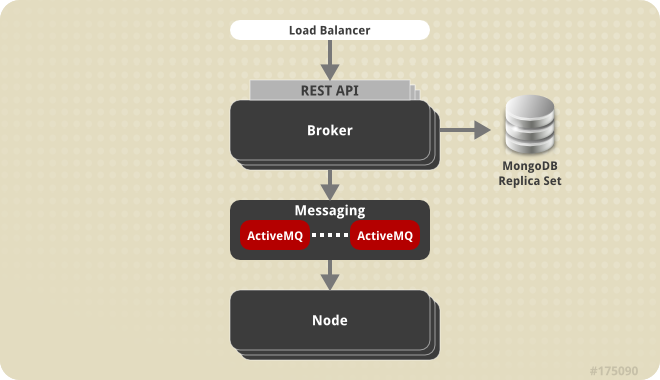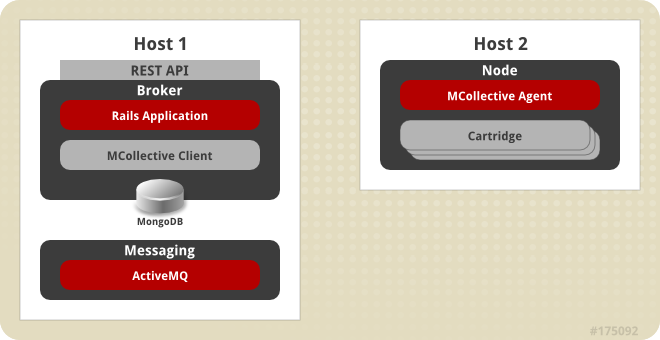3.3. Redundancy
OpenShift Enterprise incorporates redundancy where each architectural component can be configured redundantly. The broker applications themselves are stateless and can be set up behind a simple HTTP load balancer. The messaging tier is also stateless, and MCollective can be configured to use multiple ActiveMQ endpoints. Multiple MongoDB instances can be combined into a replica set for fault tolerance and high-availability. This is illustrated in the following diagram:
Figure 3.5. Implementing Redundancy in OpenShift Enterprise
This guide focuses on providing a functional installation, and for the sake of simplicity, does not cover how to implement redundancy with the various components. It describes how to install the broker, data stores, and messaging components on one system, while the node is configured on a separate system. The following diagram displays the resulting system topology:
Figure 3.6. Simplified OpenShift Enterprise Installation Topology

